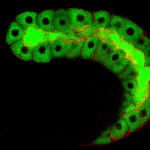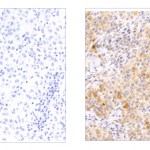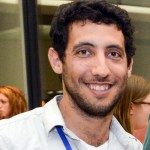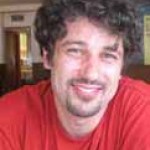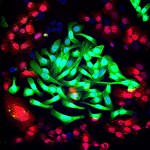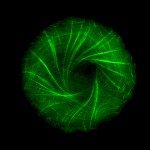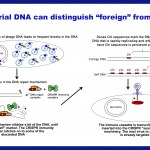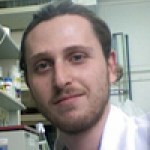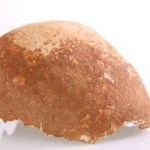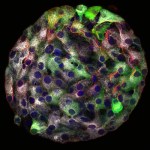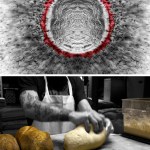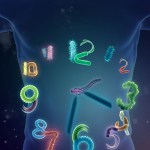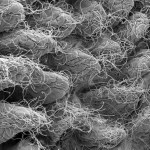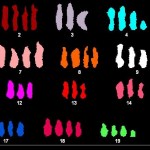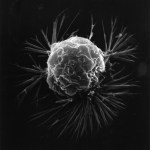biological regulation
Cells that “spit” out their contents and messenger RNA that is not so swift at delivering its message. Those are two brand new stories on our new and improved website. Check it out and let us know what you think.
The first story arose from a simple question: How do secretory cells – those that produce copious amounts of such substances as tears, saliva or all those bodily fluids – manage to get their contents out of the cell? Cells are walled all the way around; they don’t really have doors for letting things the size of a drop of fluid out. Instead, they use the vesicle system – small globes…
Metastatic melanoma tumors. Left exhibits low or absent expression of RASA2 and reduced survival, typical of about 35% of patients. The sample on the right exhibits high RASA2 expression and increased survival
Rates of melanoma are increasing, even as the rates of other common cancers are decreasing. According to the Melanoma Research Alliance, it is the most common cancer diagnosis in young adults 25-29 years old in the United States, the second most common cancer in young people 15-29, and its incidence has tripled in the last 30 years.
What are we doing about it? The Weizmann Institute’…
Ziv Zwighaft
Ziv Zwighaft is a research student in the group of the Weizmann Institute’s Dr. Gad Asher. Their new findings reveal some intriguing connections between our circadian clocks – which tick according to cycles of day and night – metabolism and aging. Here is his description:
King Solomon said: “There is a time for everything, and a season for every activity under the heavens.”
Our research tries to take this insight into the condition of living creatures a few strides forward. How strictly does it apply? Our lives are regulated by a biological clock – it’s actually many clocks…
When Dr. Jakub Abramson was a 14-year-old boy in the former Czechoslovakia, he asked his father what was the best place to do science. His father took the question seriously and, after some consideration, answered “the Weizmann Institute of
Dr. Jakub Abramson
Science.” Since that day, says Abramson, he knew he was bound for the Institute. “It’s just that the science I was interested in back then involved blowing things up,” he says.
Today, Abramson is more interested in exploding the common wisdom about autoimmune diseases. His lab at the Weizmann Institute has produced two new papers –…
What is a breakthrough in cancer research? It is a new piece of a puzzle made up of a million pieces. It may, however, be a piece that allows a picture to start emerging – one that lets us see the shape of the next piece needed to fill in more of the puzzle, or start making changes to rearrange the picture from one of cancerous growth to one of normalcy.
The Institute’s Prof. Yosef Yarden’s recent research provides a vital piece for the puzzle of resistance – how cancer cells, especially those in recurring cancers, stop responding to chemotherapy. His answer is specific to a kind of lung…
Here is today's scientific image:
This delicate, fluffy object is a cytoskeleton viewed under a fluorescence confocal microscope. Below is a time-lape video of the process. For an explanation of why the cell's actin fibers twist around into this shape, go to our website.
[embed]https://www.youtube.com/watch?v=iLm0Ojngjc4[/embed]
Indeed, all three of today's new articles involve crucial cellular dynamics: cutting up unfolded proteins with pared-down molecular "scissors" and binding to metal ions in proteins. In other words, within that lovely shell-like cytoskeleton, the cell is quite a busy…
Foreigner or native-born? Your immune system discriminates between them, as do those of bacteria. Yes indeed, bacteria do have immune systems – pretty complex ones at that. And like any useful immune system, the bacterial ones must have a good technique for distinguishing “foreign” from “self.”
You may even have heard of the bacterial immune system: It’s called CRISPR, and it’s used in biology research around the world for DNA engineering and genome editing. CRISPR normally inserts short DNA sequences taken from phages – viruses that invade bacteria – into special slots called spacers within…
Dr. Gabriele D'Uva is finishing up his postdoctoral research at the Weizmann Institute. Here is his account of three years of highly successful research on regenerating heart cells after injury. Among other things, it is the story of the way that different ideas from vastly different research areas can, over the dinner table or in casual conversation, provide the inspiration for outstanding research:
Three years ago, when I joined the lab of Prof. Eldad Tzahor, the emerging field of cardiac regeneration was totally obscure to me. My scientific track at that time was mainly focused on normal…
Manot Cave cranium
With a skull and Keats, there was little choice but to write about the new online items in rhyme. So with apologies to Shakespeare, Keats and the scientists, as well as the people at SpaceIL, here are today's grab bag of poems. As usual, follow the links.
On a Lone Cranium
Alas poor Yorick – We can only know
Where you lived all those eons ago
Walking, did you take those others in stride;
Human, yet strange, as they strode alongside?
Did your children wander forth,
Searching for a greener North?
Can your skull, a bit of bone,
Tell us where our seeds…
What's in a picture?
Prof. Benny Shilo knows the value of a good picture. We recently mentioned his book: Life’s Blueprint, which uses photographs of things like bread dough and yeast cells to illustrate the process of biological development. Here is the image from the most recent piece we have uploaded on his research:
This is an individual Islet of Langerhans, as you’ve never seen it before. The white dots are the insulin-containing vesicles inside the beta cells, which both sense glucose levels and secrete insulin. Shilo and his team managed to get “close-up shots” of the individual cell…
A new book will make you stop and think about the relationship between the microscopic world and the one we pass by every day.
Life’s Blueprint – The Science and Art of Embryo Creation; Benny Shilo, Yale University Press, 174 pages.
Stem cells and their niche
When a stem cell divides, one daughter maintains the stem cell fate while the other produces a differentiated progeny. Stem cells are positioned in a restricted spatial niche that provides signals maintaining them in a proliferative, nondifferentiated state. After division, only the undifferentiated progeny is retained in the niche.…
To all bits of clockwork that are adjusted in our bodies according to our day-night timetable, we can now add two more: cancer growth and the schedules of our internal complements of bacteria.
Cancer, according to a new Weizmann Institute study, may grow and spread more at night. In this scenario, our cells are getting messages left and right, day and night, and taking them in through the specialized receptors on their outer membranes. During the daytime, our bodies produce natural “wake-up” hormones, and these apparently, take precedence over other incoming messages, their receptors…
Could artificial sweeteners be helping cause the very thing they are supposed to prevent? They may well do so, and you can probably blame your microbiota – those masses of mostly-friendly bacteria that live in your gut. According to a paper by Weizmann Institute scientists that appeared today in Nature, artificial sweeteners not only encourage the wrong kind of bacteria to expand their numbers, they also induce mix-ups in the cross-communication between these bacteria and your body. Those mix-ups can lead to glucose intolerance – the first step toward metabolic syndrome and diabetes. So,…
The next time you reach into the fridge for a midnight snack – take heed: New research by Weizmann Institute scientists has shown that the time at which you eat your meals might have a profound effect on your liver triglyceride levels. Their research was conducted on mice, but if found to be true for humans as well, it may have clinical implications in the way patients could be treated for fatty liver and other metabolic diseases, which are characterized by abnormally elevated levels of lipids in blood and liver cells.
Our bodies are naturally cued to carry out various biological…
Since the haiku post was well received, and since we have another three pieces online today – each on a different finding and each interesting in its own right – I have decided to return to the haiku format. Among other things, there is something quite satisfying about distilling complex scientific findings down to 17 little syllables – like writing the perfect tweet, but more so.
In any case, follow the links to read more:
A burst of enzymes:
A transcription traffic jam
Watch for gene speed bumps
Genetics can rid
The poison from potatoes
Or add it elsewhere
image: Thinkstock…
Another advance in cancer research is featured on our website this week. Among other things, this one highlights the dangers of assuming causation from correlation. Prof. Dov Zipori and his team were looking at adult stem cells in the bone marrow. These hold a lot of potential for treating many kinds of disease but, like many kinds of stem cells, there is a risk of these cells differentiating into cancer instead of the intended normal tissue replacement. The idea was to find a marker that could tell which cells were more likely to turn cancerous, thus making the use of these stem cells safer…
New research at the Institute may offer a sliver of hope for treating “triple-negative” breast cancer. “Triple-negative” refers to the fact that the breast cancer cells are missing the three different receptors targeted by the currently available drugs, for instance Herceptin and steroid hormone blockers. This type of cancer also tends to be fairly aggressive, and the risk of early recurrence is higher than for other types of breast cancer.
Triple-negative breast cancer cells do have other receptors – particularly EGFR, a growth factor receptor that would seem to be a good target for…
Does your face reveal what’s in your heart? It might – even more than you know. Take, for instance, a common group of birth defects – forms of a disorder called DiGeorge syndrome. Around one in 4000 is born with this syndrome, which arises from a deletion of a short segment of chromosome 22. Among other problems, this deletion nearly always involves deformations in both the face and the heart.
Sculpture: Igor Mitoraj
The Institute’s Prof. Eldad Tzahor had already shown that face and heart go together: Very early on in the developing embryo, the progenitor cells that will…
